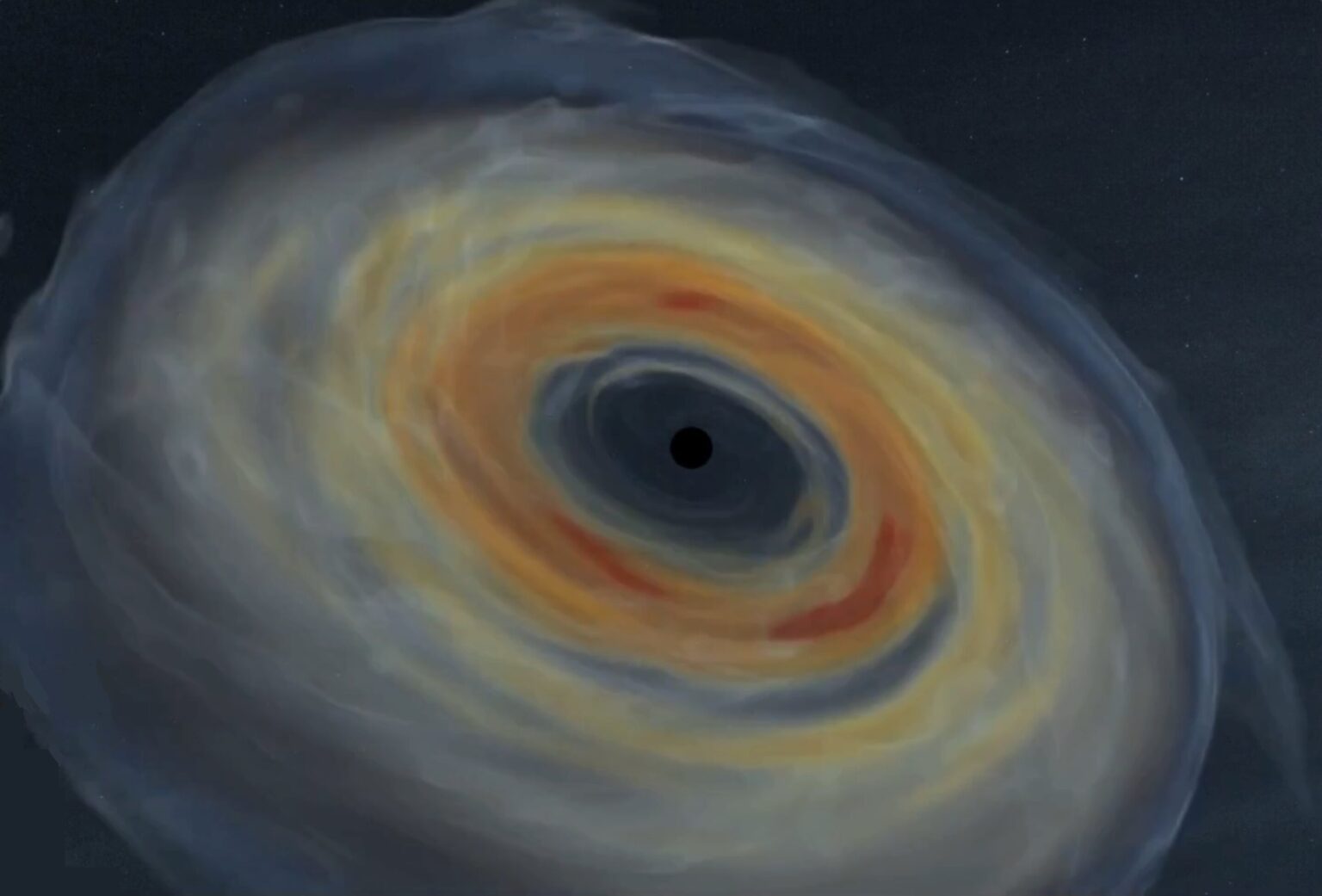A new theoretical study suggests the existence of a previously undiscovered source of gravitational waves. They may be single black holes with very large accretion disks — objects formed by the death of massive stars that have been rapidly rotating before.

New source of gravitational waves
On August 22, The Astrophysical Journal Letters published a study, the authors of which claim that there must be unknown sources of gravitational waves in space. The latter are fluctuations of space itself. They can be registered only by special sensors such as LIGO and VIRGO.
The gravitational waves have so far only been recorded from merging objects: black holes and neutron stars. However, now scientists are sure that a single singularity can constantly generate them. However, for this it must meet certain parameters.
The star from which the black hole should form must have a mass at least 15-20 times greater than the solar mass. At the same time, it must rotate rapidly. Then during the collapse, that is, the supernova outburst, a significant part of its mass should, instead of falling inside, fly outside and form an extremely massive accretion disk. It will be the source of the gravitational waves for at least some time.
Why didn’t they think of this before?
It is worth noting that such black holes with massive accretion disks are nothing new to astronomers. Their existence has been known for a long time, but no one has thought to look for gravitational waves from them. The matter is that although the interaction of an object with its surroundings gives rise to gravitational fluctuations, it was thought that they must be too chaotic and would simply be lost against the background of noise.
After all, even gravitational waves from the merging of two objects we can see only because such interaction generates resonance. However, a new study has shown that the interaction between a single black hole and its accretion disk should create much less chaos than previously thought.
We would be able to detect the gravitational waves generated by such an object from a distance of at least 50 million light-years. This is about 10 times less than for the other sources, but still far away enough to hope to at least find something within a reasonably short time. At least future detectors could register a dozen of them a year.
The scientific community is already very interested in studying this new class of objects. However, astronomers cannot yet say what to look for, because stars have different masses and the gravitational waves from their collapse may look different.
Scientists see two ways to study this problem. The first is to model a million collapsars on a computer and build dependencies. However, this is expensive as powerful supercomputers will be needed. The second way is to carefully study the gravitational background, trying to pick up unusual signals in it that are tied to supernova flares. However, it can take a considerable amount of time.
According to phys.org


